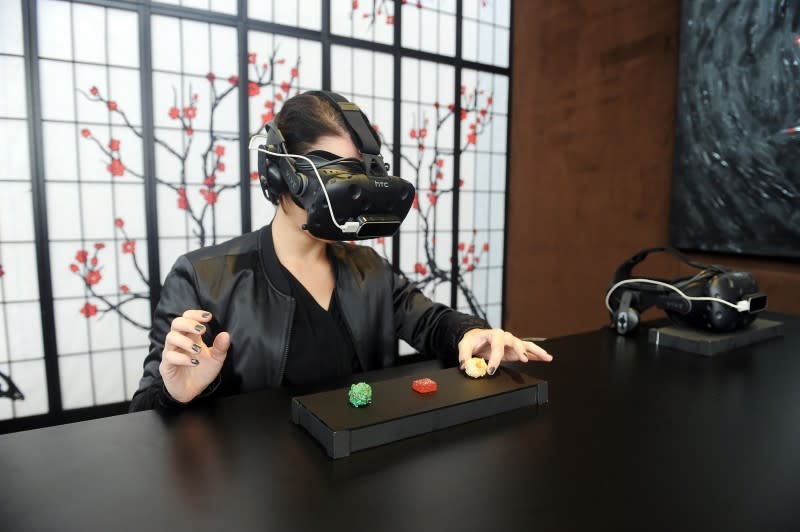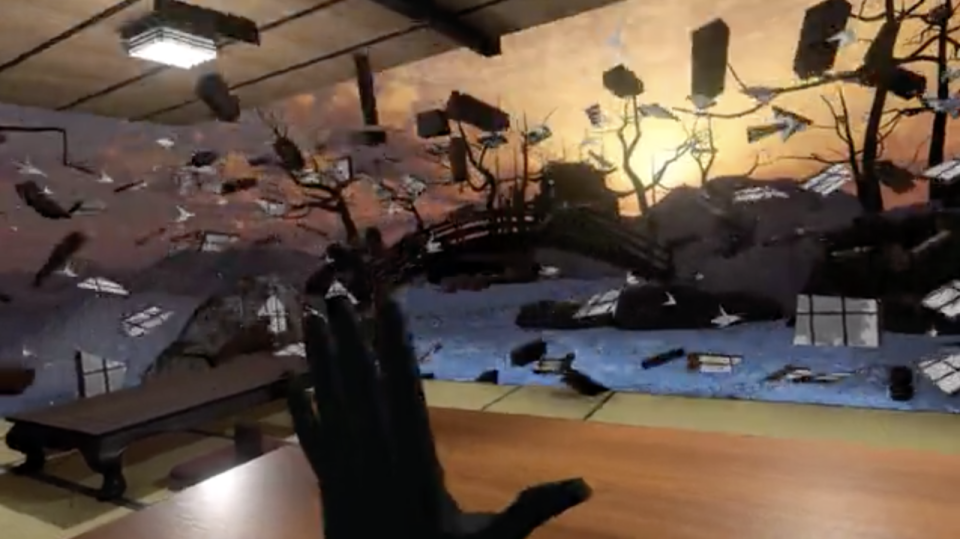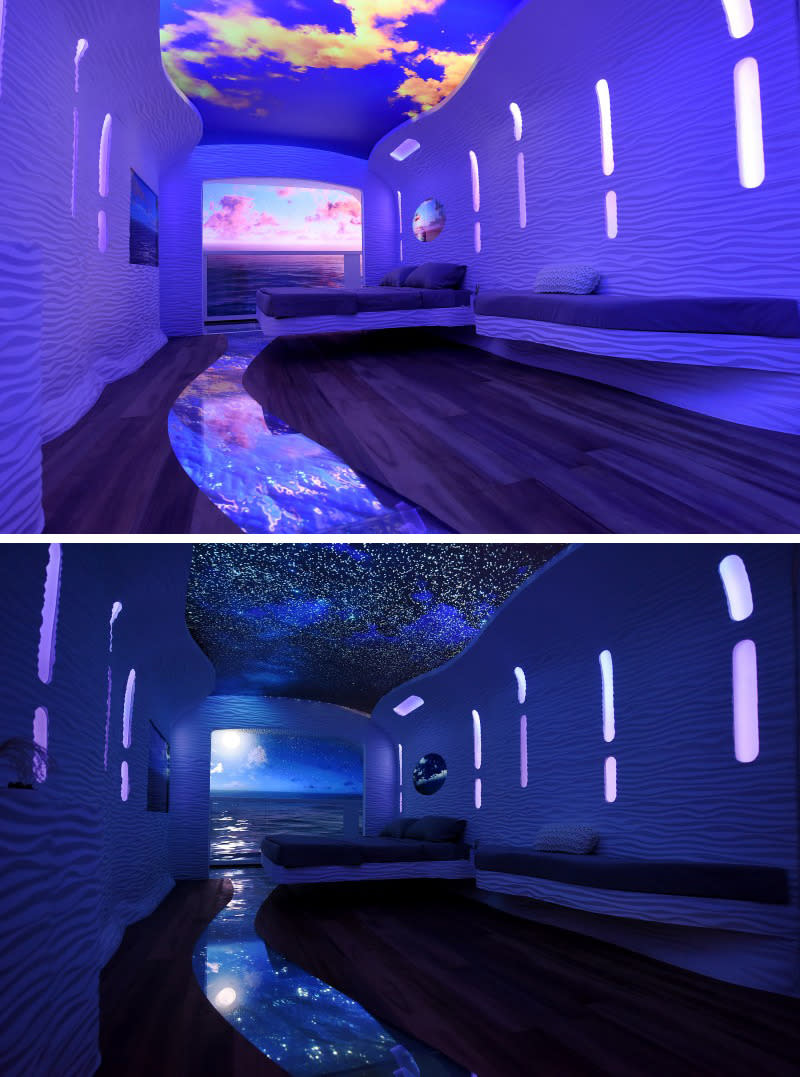Royal Caribbean is making a big bet on technology
For the last few years, Royal Caribbean (RCL) has been on an almost maniacal push to turn its cruise ships into technology showpieces. Most of the developments are one-off technologies, massively expensive and time-consuming to develop and debug: robot bartenders, battery-powered bumper cars, a dedicated satellite for providing internet service, and so on.

I now realize, of course, that they’re installing all of this tech for some perfectly self-interested reasons. One, of course, is to differentiate this cruise line from it rivals. Another is to keep the passengers entertained and having a good time. (The novelty of some of these features wears off quickly—but since you’re on board for only a few days, you don’t care.)
Last month, at an event called Sea Beyond, the company unveiled a showcase of the next technologies it’s developing. About a thousand journalists and travel agents toured these prototypes at the Brooklyn Navy Yards. I was among the invited, since—full disclosure—I had served as the emcee for the launch of an earlier RC ship in 2015.
Here’s what you have to look forward to—or maybe not.
Automated checkin with face recognition
As anyone who’s taken a cruise can tell you, the boarding process doesn’t get your vacation off to a great start. You’re herded into this huge hangar-like processing center at the port, and you wait in long lines dragging your luggage and children, so that you can reach a desk to get your photo taken and your room key issued.
RC’s existing boarding process is more efficient, because you can check yourself in and take your own photo at home, using the company’s app. But starting next year, the company hopes, things will be even quicker: You’ll simply stride onto the ship. Face recognition cameras will identify you (based on a photo you uploaded in the app), and a screen will welcome you by name as you walk through the metal detector.
They had the system working as we entered the Navy Yards building.

At the moment, it’s a purely optical system—there’s no 3-D modeling of your face, as there is on the iPhone X—so in theory, some evildoer could fool it with a photo. (But why would they bother? The minute the real you showed up, the system would flag you as already having checked in, and security would straighten it out.)
Drinks anywhere
At the event, you could order free drinks from the app—wherever you happened to be in the building. The waiters could find you, bearing your drink, thanks to GPS-like screens built into their serving trays, showing your current location and your face.
It worked great, even when I tried to fool my waiter by dashing into a different room when I saw him coming. Twice.

The system relies on Bluetooth beacons throughout the space; eventually, they’ll be installed on the ships themselves. Everybody wins: You don’t stand in lines, and the cruise line sells more drinks (because people don’t have to stand in line).
I interviewed Joey Hasty, a former Disney Imagineer who now leads RC’s innovation lab in Miami. Aren’t there some passengers who’ll find all of this tracking and facial scanning a little creepy?
“You can always opt out,” he replied. “If you really want to, the line will always be there.”
VR dining
By far the weirdest new technology on display is something they call virtual-reality dining.
I went into the mockup restaurant without having any idea what that meant. I sat down at a long table and put on HTC Vive virtual-reality goggles.

What I saw inside the goggles was the inside of a Japanese tea house with traditionally decorated paper walls. A soothing female voice in the headphones explained that I was about to be transported.
In front of me, a waiter set down a tray containing three morsels of food. It was basically sushi, but I didn’t know that; all I could see was three glowing, sparkly colorful orbs—and my own hands, represented as silhouettes.
When the soothing voice gave me the go-ahead, I picked up the first orb and popped it into my mouth. At that moment, the music changed (the tray had sensors that knew when the bite was gone), and the walls of the tea room flew away in animated fragments, revealing that I was now in a cherry-blossom garden.

The same thing happened with each of the other two bites: the scenery and the music would change. Lighting, weather, locale.
My first thought was, “Man, this is weird.” And what does it get you? It isolates you from your dining companions. Furthermore, how food looks is an essential part of how it tastes; now you can’t see your food.
“It turns out that all of our senses are processed by the same part of our brain,” Hasty explained, “so it’s possible for us to use the visuals and the audio to hack and hijack your senses, to heighten the dining experience.” And I have to admit that that’s true: At this moment, I remember each of those three bites incredibly vividly (but weirdly).
“It might not ever make the best seven-course meal,” Hasty says, “but we think it can make an amazing dessert bar, for instance.”
Stateroom of the future
On RC’s existing Quantum-class ships, they’ve done something clever with interior cabins (the cheap ones that don’t have windows): Where the window would be, they’ve installed a floor-to-ceiling LCD screen. It displays whatever you would see if you had a window, thanks to a camera feed from outside the ship. In that way, it doesn’t feel so isolated from the real world.
But at the Sea Beyond event, a much more advanced stateroom concept was on display.
“As our ships get bigger and bigger and bigger, you start to be removed a little bit more and more from the ocean and the ports of call,” Hasty told me. “We believe the stateroom should connect you more with the ocean and our ports of call. And so we’re experimenting with ways to bring that outside in.”
The entire ceiling is a giant 4K OLED screen. There’s a foot-wide “river” winding its way across the floor—also an OLED screen. Two large “windows” on either wall are—that’s right—OLED screens, too.
All of these screens are synchronized so that they show different angles of the same scene. They can show, for example, the current conditions outside the ship. “We mirror exactly what you see outside, using 4K cameras. But since we can show you what’s really out there, we thought, ‘What if we could take you to fantastical places?’ Or maybe you wanted better weather or a sunset, a different time of day. So we let our guests control those scenes. With the tap of a button, you can turn daytime into a sunset, or the room can help you fall asleep by creating a canopy of stars.”

I tried out the sunset scene, the tropical rainforest scene, and the starry-night scene, complete with shooting stars. All of those screens, combined with a matching soundtrack, created truly transporting moments.
And the Misc.
Some of the other tech on display included:
Self-unlocking staterooms. The staterooms on display didn’t require a key or a wristband; if you have a smartphone, the door unlocks automatically when you approach. The lights come on, too.
Interior consumer tech. Inside, every room has an Apple (AAPL) TV (they’ve figure out how to auto-wipe the Apple TV after you leave, so that the next guest can log in with his own account). And Microsoft’s (MSFT) Cortana is always ready, so that you can adjust the temperature, the lighting, or the curtains with voice commands.
AR captain’s view. Ordinarily, when the captain is operating in fog or dark, he uses a radar screen to see what hazards are around the ship. But we also saw a mockup of a new pilot’s station, where a huge screen displayed an augmented-reality view of the channel and the buoys that would ordinarily be obscured.
AR posters. On one wall of the event space, RC had set up what looked like movie posters—but if you looked at them through the app on your phone, they became simple animated games.
Fuel cell demo. The cruise line will join Viking Cruise Lines and others in introducing fuel cells to power its ships. Fuel cells convert hydrogen directly into heat and water, producing no exhaust of any other kind; they’re 80% efficient, versus less than 50 for today’s diesel engines.
Sailing soon
“I thought about Sea Beyond as a giant play test,” Hasty told me. “We got to put that experience in front of 1,000 people and see how people reacted.” He says that of these technologies will be on the company’s next-generation ships, called Edge (now under construction in France); and some will be retrofitted onto existing ships.
But isn’t it possible, I asked Hasty, that all of this technology risks killing the seafaring adventure of being on a ship at sea in the first place—the escape of it all?
“You know, I don’t think so,” he replied. “When we ask our guests what they really want from a vacation, they want more time with their family, they want more time for fun. No one says, ‘I want to spend an hour checking in,’ or ‘I want to wait in line at the bar for a drink.’ We talk a lot about giving you back that first day, that you sort of have to give up to get there. And we’re using technology to make that happen.”
More from David Pogue:
Battle of the 4K streaming boxes: Apple, Google, Amazon, and Roku
iPhone X review: Gorgeous, pricey, and worth it
Inside the Amazon company that’s even bigger than Amazon
The $50 Google Home Mini vs. the $50 Amazon Echo Dot — who wins?
The Fitbit Ionic doesn’t quite deserve the term ‘smartwatch’
Augmented reality? Pogue checks out 7 of the first iPhone AR apps
David Pogue, tech columnist for Yahoo Finance, is the author of “iPhone: The Missing Manual.” He welcomes nontoxic comments in the comments section below. On the web, he’s davidpogue.com. On Twitter, he’s @pogue. On email, he’s [email protected]. You can read all his articles here, or you can sign up to get his columns by email.